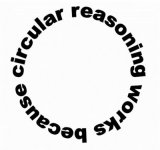Posted by MLeake:
Japle, the problem with M&S is that instead of saying something like, "these rounds have seemed to work pretty well in a wide variety of circumstances," they went too far and tried to assign hard, predictive numbers.
No, they didn’t. They reported what they saw. There was no prediction. In fact, they reported stories of failures of many of the “best” loads.
If they had said, "high velocity rounds, that expand well but have decent penetration, seem to perform better than lower velocity rounds," they probably wouldn't have received so much criticism.
But that’s not the case. The 230 gr Federal HS .45 round was at the top of the list, but it barely breaks 800 fps in most carry guns. It beat the high velocity, high(er) energy 185 and 200 gr loads.
If they had submitted their data and findings for external scientific review, that might also have helped.
“External scientific review”? What for? They never claimed their work was scientific at all.
Instead, they more or less told us what we could have figured out (kind of like undergrad psychology classes), but tried to assign statistics using faulty methodology.
The “what we could have figured out” approach led us to Hatcher’s formula and similar “theories” that sounded good, but turned out to be wrong.
And again, the work wasn’t statistical.
I haven't spoken with Jim Cirillo. I have spoken with Mas Ayoob, though, and while I don't wish to put words in Mas's mouth, his take seemed to be that M&S findings were good if looked at in general, and not in specific numbers; and that Mas likes fast but big, with sufficient mass to break bone as well as tear up soft tissue. IE hit hard, expand well, AND penetrate.
Too late to talk to Cirillo, but I squadded with Mas in IDPA matches in Orlando. He doesn’t agree 100% with M&S, but he’s the last guy to criticize them. His opinions are very close to theirs.
Here’s a quote from his Self-Defense Forum on Glocktalk:
“Whatever criticism there might be of how the available data was correlated and analyzed, the criticism always seems to come from people who never made the effort to collect, correlate, and analyze such data themselves. So it was with Marshall and Sanow, so it is with Ellifritz, and so it will be with the next person who attempts this Herculean task.
It is easy enough for critics to toss off a catch phrase such as "the plural of anedote is not data."
The critics should realize that the plural of anecdote IS "collective experience."

